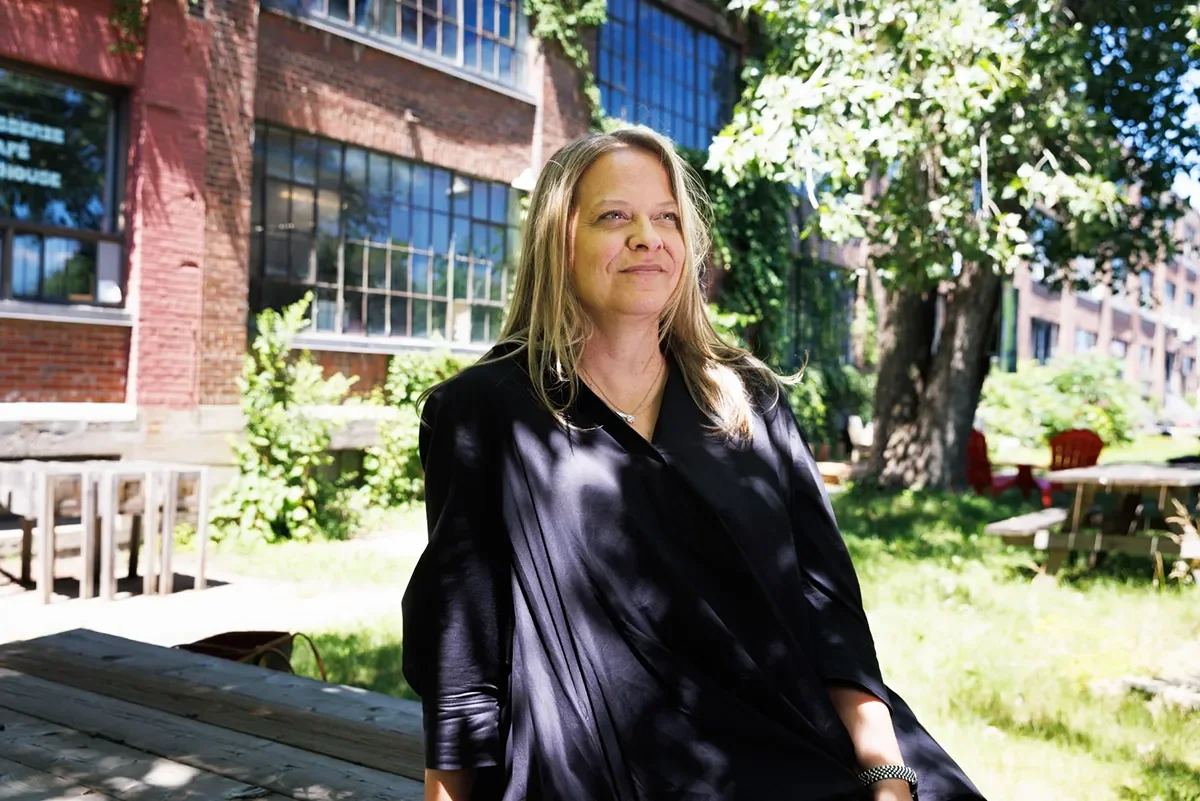'All of a sudden we’re cool' — Green builders draft a cleaner, more profitable blueprint for construction
Natalie Voland, president of GI Quo Vadis, at Complexe du Canal Lachine, a century-old former factory that is undergoing a net-zero renovation. Montreal, Quebec. June 28, 2024. (Photo by Nasuna Stuart-Ulin for Canada's National Observer)
By Darius Snieckus
Canada’s Green Buildings Strategy, Ottawa’s long-awaited plan to decarbonize millions of commercial, residential and institutional buildings to align with federal climate targets, has drawn a mixed reaction since its July 16 release.
There were high marks for a pledge to modernize energy efficiency standards, phase-out oil heating in new buildings by 2028, support heat pumps over central heating and cooling systems and a “buy clean” plan for federal infrastructure projects to promote low-carbon materials.
But the strategy did not tackle oil used in existing buildings, or impose limits on fossil gas used in 60 per cent of existing commercial and institutional structures, green building advocates said.
More importantly, there was no road map for an industry expected to build millions of new homes and buildings and retrofit millions more, while also cut emissions that account for nearly 30 per cent of Canada’s released greenhouse gases, they said.
The Canada Green Building Council, an industry body, said the strategy “misses the mark when it comes to mandating actions and setting milestones.”
Amid calls for an action plan to get the sector to net-zero by 2050, progressive developers are already leading by example on key issues of sustainable development finance, mandates and investments.
In the second part of our feature on green building pioneers, we take a closer look at an innovative retrofit of a Montreal factory into a low-carbon office co-op, a condo complex powered by geothermal energy in Toronto, and Canada’s first net-zero police station.
Big Green Build
Canada's Plastics Problem
Democracy and Integrity Project
Special Reports from COP 26
Toxins in Canada
Canada's Clean Economy And Green Stimulus
Sustainable Cities
Youth Climate Action
- November 2025
- October 2025
- September 2025
- August 2025
- July 2025
- June 2025
- May 2025
- April 2025
- March 2025
- February 2025
- January 2025
- December 2024
- November 2024
- October 2024
- August 2024
- July 2024
- June 2024
- May 2024
- April 2024
- March 2024
- February 2024
- January 2024
- December 2023
- November 2023
- October 2023
- September 2023
- April 2023
- February 2023
- January 2023
- December 2022
- November 2022
- September 2022
- August 2022
- April 2022


